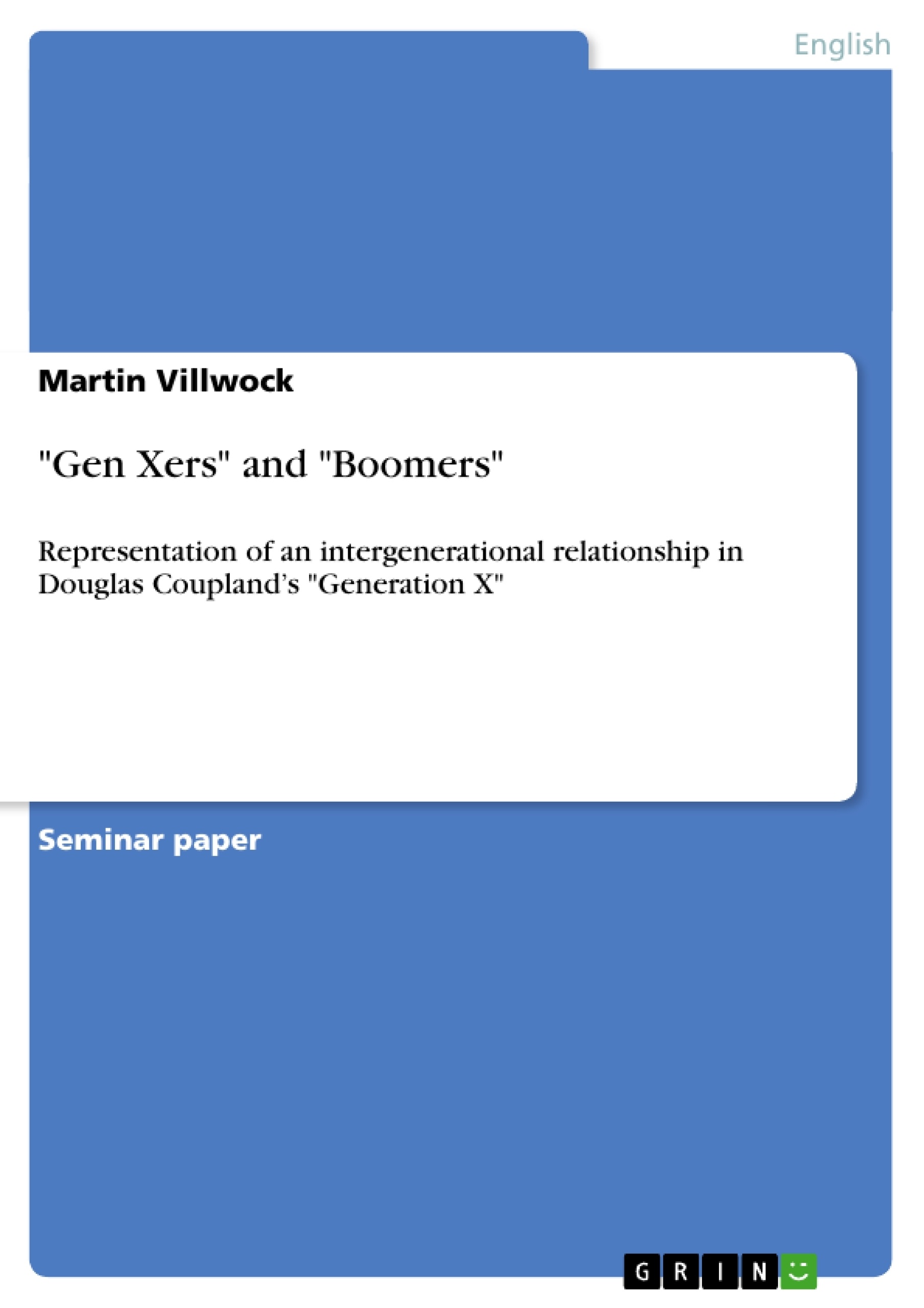Every individual has a conception of his or her relationship to his parents. Correspondingly, most societies have an understanding of the different generations that live within them, and of the relationship that exists between these generations.
In the early 1990s however, the character of the generation born during the 60s and 70s, thus mostly being in their twenties, “[remained], to many, an enigma” (Holtz, 1). There seemed to be no way of identifying them as a group, no obvious ideas, political interests or music they shared. (George, 24-26 and Holtz, 3)
This explains, to some extend, the name and the success of Douglas Coupland’s book Generation X; a book that was dubbed “most shoplifted book in America” (Rogers, 1). The publishers sensed that there might be a common interest in an identification of the young generation; consequently, the cover text of the original edition read: “Finally [my emphasis] … a frighteningly hilarious, voraciously readable salute to [this generation] – a camera shy, suspiciously hushed generation known vaguely up to now [my emphasis] as twentysomething.”
The media happily accepted this input and put their focus on the characteristics they thought to be fabulously pointed out in the book; for example the contempt towards the older generation. This escalated and soon developed into sort of a small inter-generational war in magazines, books, newspapers and movies (Porsche, 10-11).
Is this what Coupland tried to achieve? Was it his intention to create new front lines? The main question is how is the “Boomer” – “Gen Xer” relationship displayed in Generation X? In this paper, an attempt will be made to point out the popular conception of this relationship in the 90s, and to find out how it is actually represented in this book.
Inhaltsverzeichnis (Table of Contents)
- Introduction
- Plot of the book Generation X
- Definition of the "Generation X"
- Definition of the "Baby Boomer" generation
- Popular conceptions of the relationship between "Boomers" and "Gen Xers"
- Representation of the relationship between "Boomers" and "Gen Xers" in Generation X
- Conclusion
Zielsetzung und Themenschwerpunkte (Objectives and Key Themes)
This paper examines the representation of the intergenerational relationship between "Boomers" and "Gen Xers" in Douglas Coupland's novel, Generation X. It aims to explore how this relationship is portrayed in the book, comparing it with popular conceptions of the two generations in the early 1990s. The paper analyzes the characterization of "Gen Xers" and their perceived relationship with the "Boomer" generation.
- The definition and characteristics of "Generation X" as portrayed in the novel
- The representation of "Boomer" – "Gen Xer" interactions and dynamics
- The impact of societal expectations and media portrayals on the perception of "Gen Xers"
- The novel's exploration of themes such as disillusionment, apathy, and the pursuit of personal freedom
- The portrayal of the "Gen Xer" experience in the context of the post-Boomer era
Zusammenfassung der Kapitel (Chapter Summaries)
- Introduction: This chapter introduces the concept of generational relationships and focuses on the ambiguous identity of "Generation X" in the early 1990s. The chapter highlights the influence of media portrayals on the public perception of this generation.
- Plot of the book Generation X: This chapter outlines the main plot of the novel, focusing on the lives of three young adults, Andy, Claire, and Dag, and their shared experiences in Palm Springs, California. The chapter explores their individual journeys and their shared sense of disillusionment with conventional societal expectations.
- Definition of the "Generation X": This chapter delves into the meaning and application of the term "Generation X." It explores how Coupland uses the term to describe a specific group of individuals born in the 1960s and 1970s and their unique characteristics, including a sense of detachment from society and a lack of interest in traditional careers.
Schlüsselwörter (Keywords)
The key terms and topics of the work include "Generation X," "Baby Boomer," intergenerational relationships, generational identity, disillusionment, apathy, societal expectations, post-Boomer era, and the representation of young adulthood in contemporary literature. These terms reflect the primary focus of the research and the exploration of generational differences and experiences in the context of Coupland's novel.
- Quote paper
- Martin Villwock (Author), 2004, "Gen Xers" and "Boomers", Munich, GRIN Verlag, https://www.grin.com/document/81418



